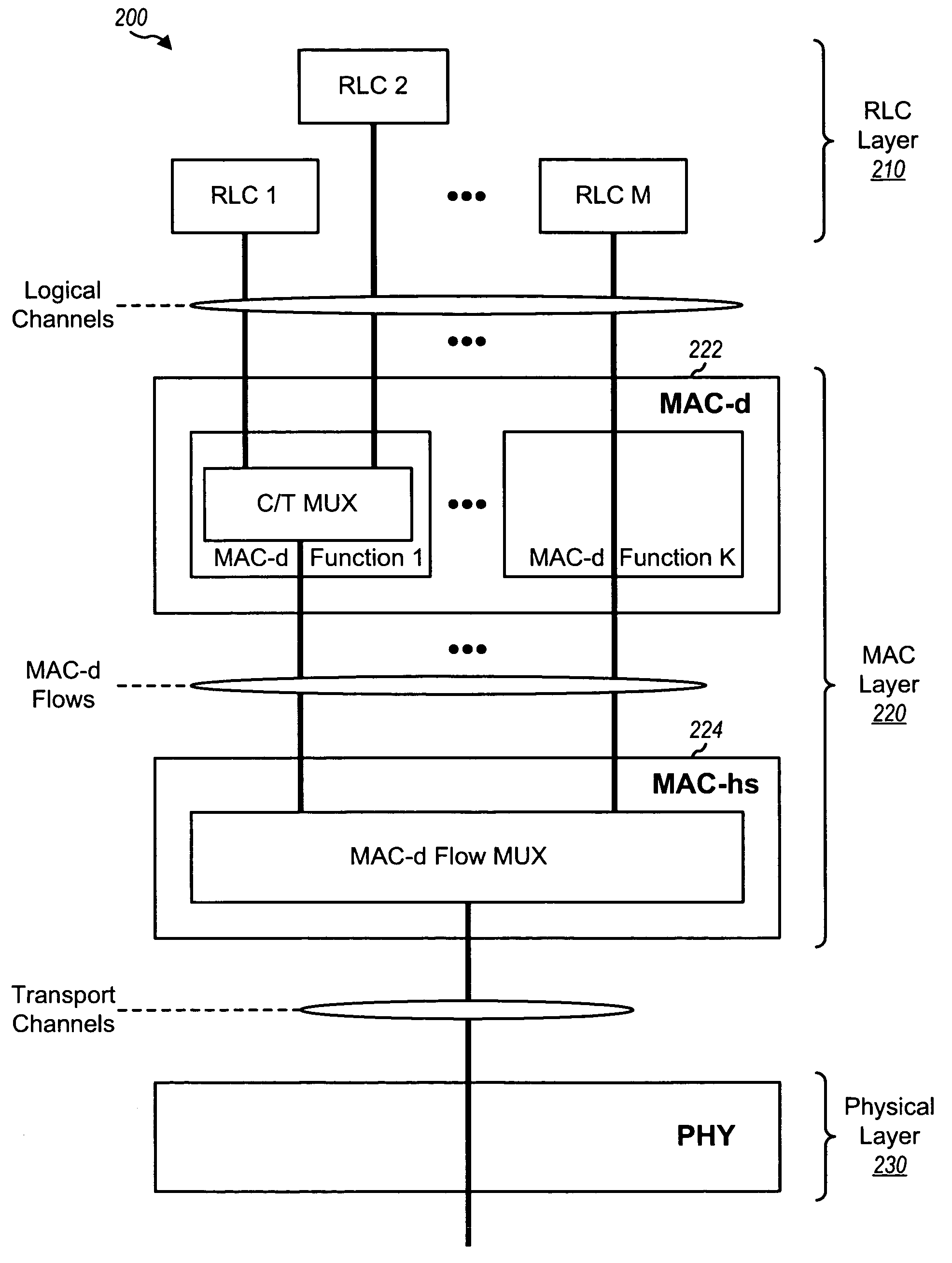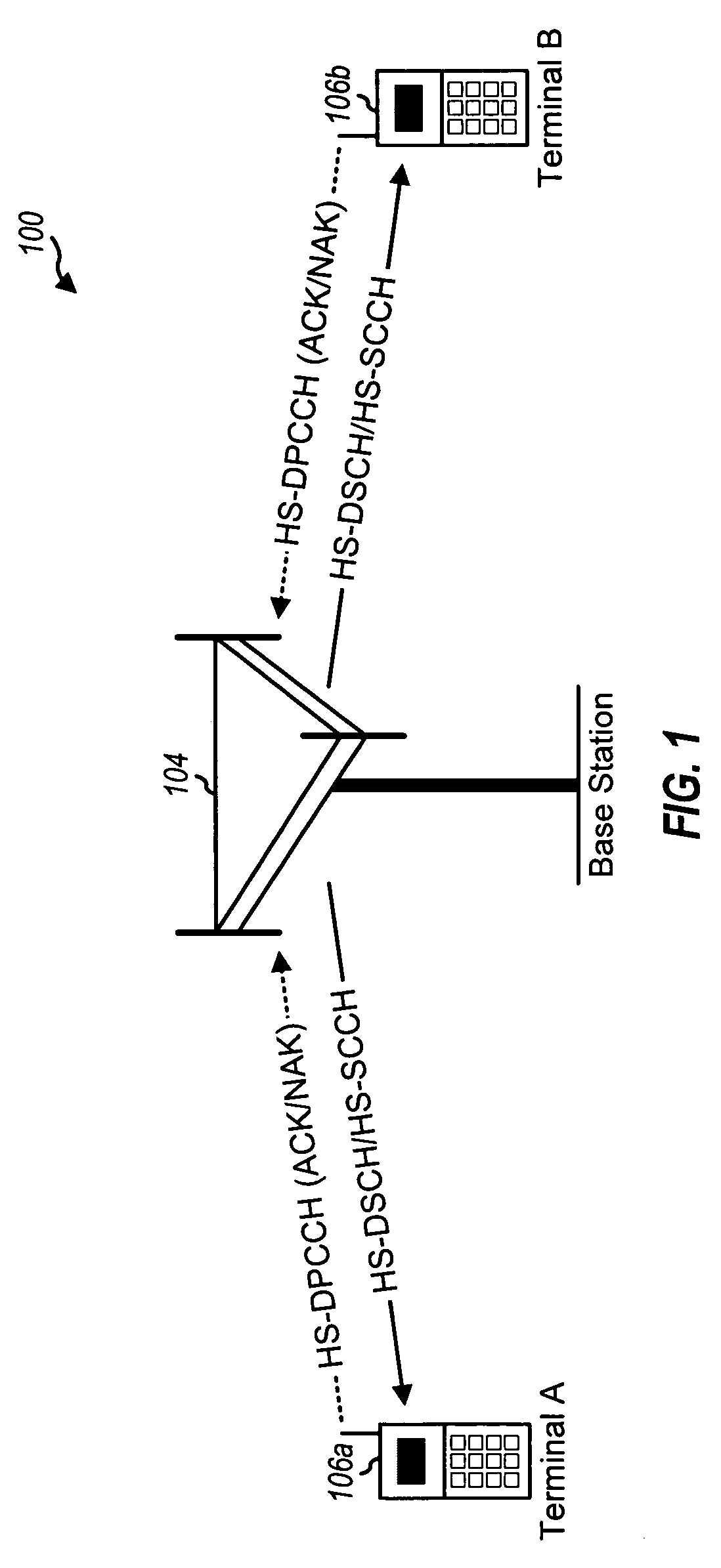Data delivery in conjunction with a hybrid automatic retransmission mechanism in CDMA communication systems
a technology of automatic retransmission and data delivery, applied in the field of data communication, can solve the problems of re-ordering entity stalling or re-delaying the delivery of recovered packets to higher layers, packets may not be decoded correctly, erased, etc., and achieve the effect of reducing the effect of missing packets and improving stall avoidance performan
- Summary
- Abstract
- Description
- Claims
- Application Information
AI Technical Summary
Benefits of technology
Problems solved by technology
Method used
Image
Examples
first embodiment
The HARQ channels to be included in the candidate set may be selected in various manners, which may be dependent on the available information. In a first embodiment, the candidate set is formed upon detecting a missing packet and would include all HARQ channels that may be used for packet transmission, except for the HARQ channel for the recovered packet that was used to detect the missing packet.
second embodiment
In a second embodiment, the candidate set for a missing packet is defined to include all active HARQ channels at the time the missing packet is detected. The snapshot of the candidate HARQ channels at this time would be accurate if at least one control message for the missing packet is received, since that control message would put the HARQ channel corresponding to the missing packet in the active state, and the channel would then be included in the candidate set for the missing packet.
However, this snapshot would not be accurate if all control messages for the HARQ channel used to send the missing packet were missed by the receiver. For example, if a control message for the first transmission of packet P1 sent on HARQ channel H1 is missed, then this channel would remain in the Inactive state. Thereafter, if another packet P2 for the same priority queue is sent on another HARQ channel and is decoded correctly (before packet P1 is retransmitted on HARQ channel H1), then packet P1 wo...
third embodiment
In a third embodiment, which avoids the problem described above, the candidate set for a missing packet is formed some amount of time after the missing packet was detected. This delay is selected to be long enough to ensure that at least one control message will be received for the missing packet before the candidate set is formed for the missing packet. A “delay” timer (denoted herein as TM2) may be used to keep track of the amount of time to wait before taking the snapshot of the candidate set.
Based on the specified reliability for the control channel, which is 10-2, the delay timer would only need be long enough to receive one additional control message transmission. If the delay timer is used, then the receiver would in effect need to miss two consecutive control message transmissions in order to form an inaccurate candidate set, and thus lose the packet. Based on a probability of miss of 10-2 for the control channel, two consecutive control channel misses would occur with a pr...
PUM
 Login to View More
Login to View More Abstract
Description
Claims
Application Information
 Login to View More
Login to View More - R&D
- Intellectual Property
- Life Sciences
- Materials
- Tech Scout
- Unparalleled Data Quality
- Higher Quality Content
- 60% Fewer Hallucinations
Browse by: Latest US Patents, China's latest patents, Technical Efficacy Thesaurus, Application Domain, Technology Topic, Popular Technical Reports.
© 2025 PatSnap. All rights reserved.Legal|Privacy policy|Modern Slavery Act Transparency Statement|Sitemap|About US| Contact US: help@patsnap.com



